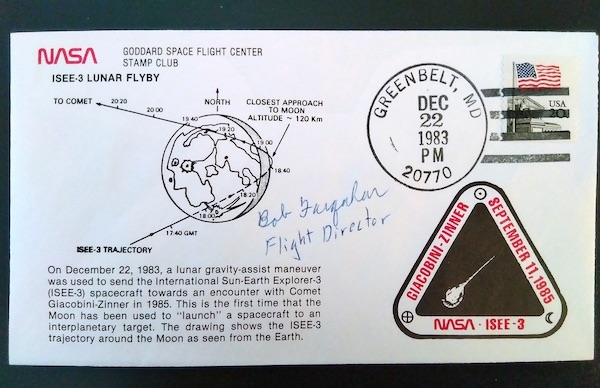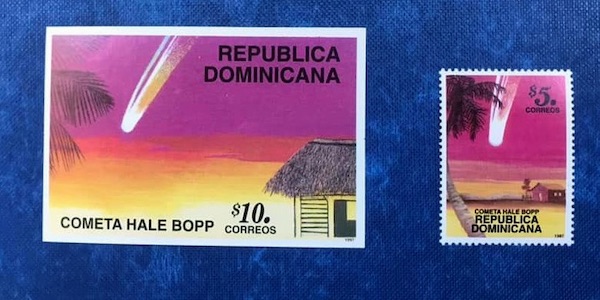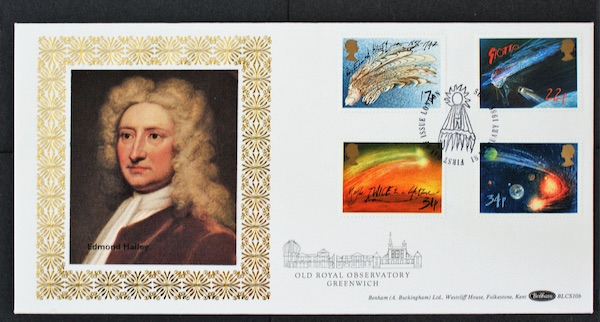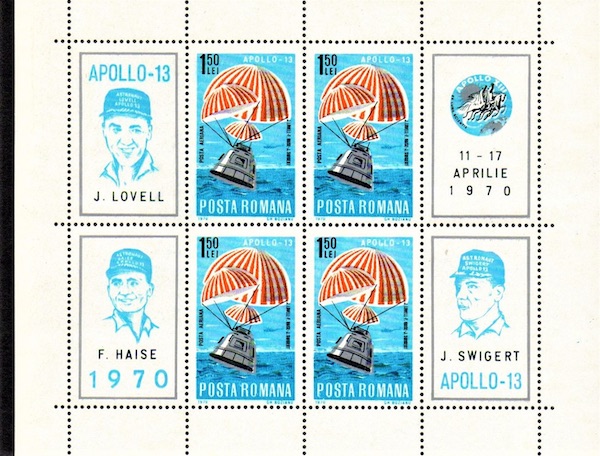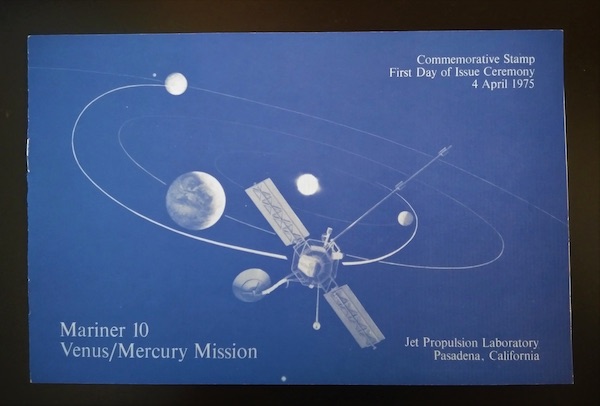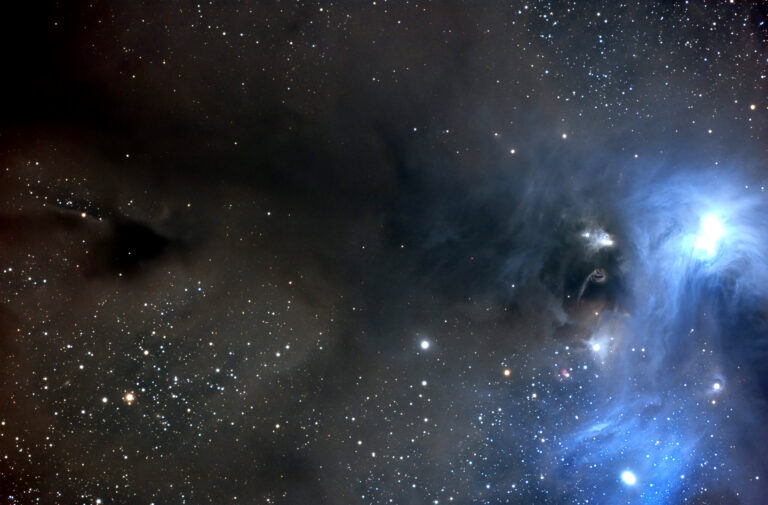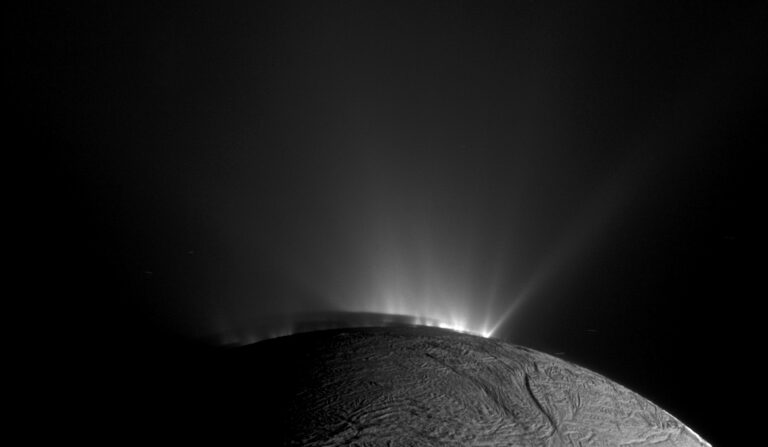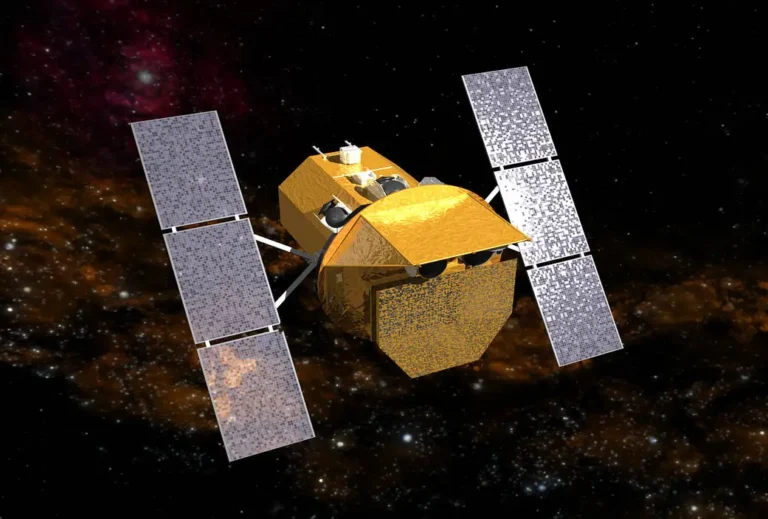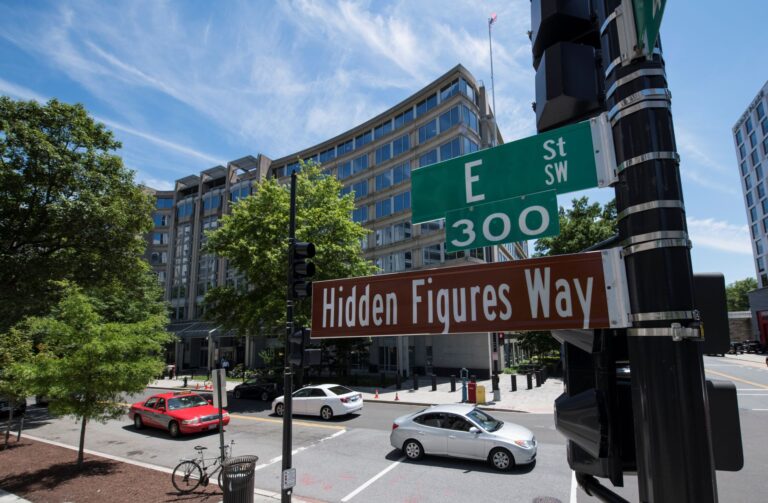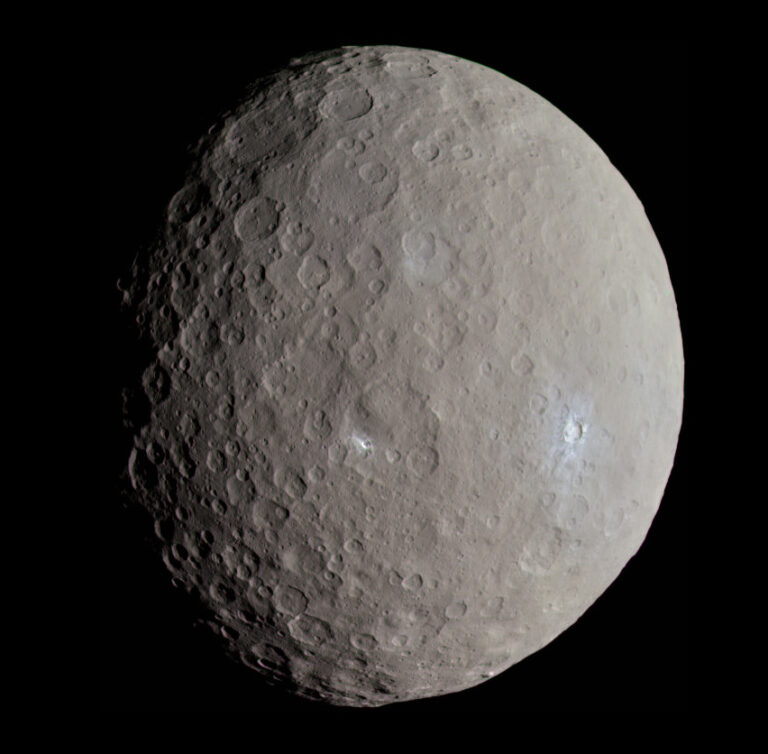Key Takeaways:
You may have guessed that I’m talking about postage stamps. I’ve had a lifelong interest in astronomy, but I didn’t turn my attention to stamp collecting until a few years ago. This new hobby ignited when, while leafing through my father’s stamp collection, I spotted a science-fiction-themed stamp. I soon wondered what other topics stamps could pay tribute to — particularly, astronomical ones. After some research, I realized I could bring my love of the cosmos and this new hobby together. From then on, I was captivated.
Raynor-Evans has been a fan of the night sky her whole life, but she now keeps the universe close to her in stamp form. Here the author exhibits a collection of stamps and first day covers at a celebration of the 50th anniversary of the Moon landing, at National Museum Wales in Cardiff.
Small yet vibrant and educational, stamps are also a fantastic way of documenting and commemorating scientific discoveries, providing a unique historical record. Since the release of the first astronomy-themed stamp — a blue stamp issued in Brazil in 1887 depicting the constellation Crux the Southern Cross — countries all over the world have been issuing stamps to celebrate the wonders of the sky and the achievements made by humankind.
Remembering historical events is exciting and important to us. And what better way to recognize these milestones than to look at how the world has commemorated them with the simple postage stamp throughout time?
The Royal Astronomical Society’s bicentennial
On January 12, 2020, the Royal Astronomical Society (RAS) celebrated its 200th anniversary. Located in London, the RAS is an organization actively promoting the study of astronomy, cosmology, solar system sciences, and geophysics.
In February, the British postal service, the Royal Mail, issued a special set of stamps to commemorate the group’s bicentenary. Designed in collaboration with the RAS, the images reflect scenes of discovery and research undertaken by British astronomers and astrophysicists including Stephen Hawking and Dame Jocelyn Bell Burnell.
The world watches Hale-Bopp fly by
Continuing our honoring of historical astronomical events, Comet C/1995 O1 Hale-Bopp was the most observed comet of the 20th century, slowly traversing our skies over the course of approximately 18 months. Hale-Bopp shone bright at magnitude –1 and was visible to the naked eye, even in light-polluted towns and cities.
In 1997, the Dominican Republic issued a stamp depicting the comet positioned against a tropical pink and yellow sky. When a comet nears its closest approach to the Sun, it can develop two tails as dust particles are liberated from within its icy nucleus. Solar radiation blows gas and dust from the comet’s center, forming an ion tail and a dust tail. The Dominican Republic stamp depicts this occurrence, as Hale-Bopp is shown with its two tails of gas and dust flying behind it.
Some stamp collectors even made their own covers — an envelope covered in the desired stamps and mailed by the postal service with the intention of becoming a collectible — to celebrate the comet. Avid collectors mailed their covers to Cloudcroft, New Mexico, to have them hand stamped and mailed back from the location where Hale made the first discovery of the comet.
Comet Halley’s 1986 return
Comet 1P/Halley, known to most as Halley’s Comet, is perhaps the most famous short-period comet in history — its return time of 76 years has allowed some people to view this once-in-a-lifetime event twice. Although it’s named after astronomer Edmond Halley, records of the comet date back as far as 240 B.C. in China. It was even embroidered into the Bayeux Tapestry, a famous cloth depicting hundreds of years of world events.
And on January 24, 1985, amateur astronomer and Astronomy columnist Stephen James O’Meara became the first person to visually observe Halley’s Comet, then at magnitude 19.6, as it approached the Sun for its February 9, 1986 return. He used a home-built 24-inch telescope on top of Mauna Kea in Hawaii to spot it.
Also in 1985, on July 2, the European Space Agency launched the robotic Giotto spacecraft to get up close and personal with the infamous comet. The next year, between March 12 and 15, 1986, the spacecraft approached the comet to within 370 miles (596 kilometers) and collected an impressive amount of data.
To celebrate the comet’s 1986 return to our night skies, countries around the world — from the Cook Islands in the South Pacific to Paraguay in South America — produced stamps. The Royal Mail issued a fantastic set of four stamps illustrated by the famous cartoonist Ralph Steadman. The selection is colorful and imaginative, depicting scenes such as discoverer Edmond Halley as a comically disgruntled comet; two comets in the sky (representing seeing Halley twice in a lifetime); the Giotto encounter; and the comet rounding the Sun.
Commemorating the Apollo missions
Giotto wasn’t the only spacecraft to receive the special honor of becoming a stamp. Achievements in spacecraft development and spaceflight have been celebrated on stamps for decades — and none more so than the Apollo missions. In 2019, the United States Postal Service (USPS) issued two Forever stamps to commemorate the 50th anniversary of humans landing on the Moon. The stamps illustrate the Apollo 11 landing site in Mare Tranquillitatis, or the Sea of Tranquility, and the iconic photograph of Buzz Aldrin taken by Neil Armstrong.
Also in 1970, the Republic of Rwanda issued a set of eight stamps to celebrate the accomplishments of the space race. The stamps tell the story of the race to the Moon, from humans reaching Earth orbit to the first Moon landing. While these stamps can’t capture the exact wonder and amazement the Apollo era brought, they still serve as a nice reminder of this great human accomplishment.
Celebrating modern astronomical events
A number of astronomical events took place in 2020: Eclipses, the summer solstice, meteor showers, and planetary observing all have a special place on our observational calendars, giving everyone a chance to look into the sky and spend a little less time on other worries. Annually, these events allow people to enjoy the wonders of the universe we live in, so much so that they also have been celebrated on stamps.
From objects in space, such as comets, star clusters, and black holes, to the feats of human exploration, astronomy has been globally celebrated on stamps for over a hundred years. Philately is a wonderful and vibrant way to look back and catalog the exceptional discoveries made throughout history. The hobby allows us to celebrate our growing knowledge of this beautiful and dynamic universe, and even send it around the world so that someone else can capture the universe in a space as small as a postage stamp.

